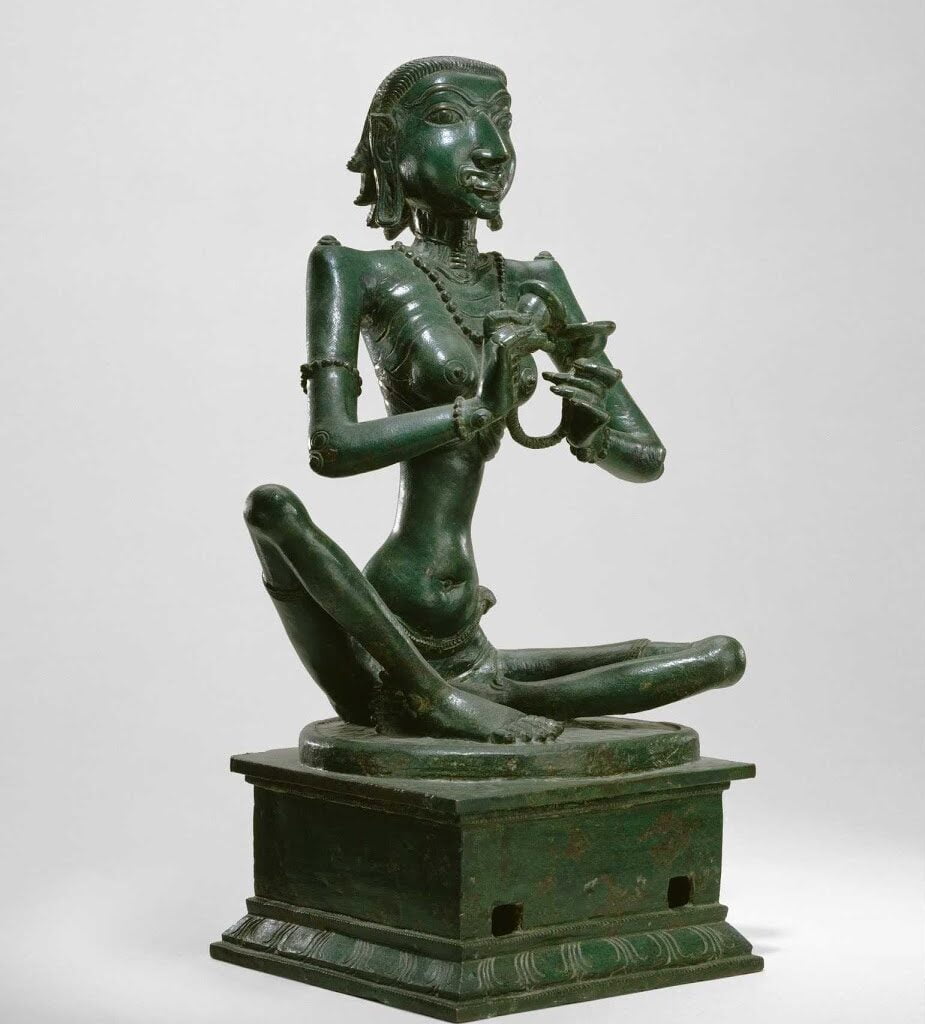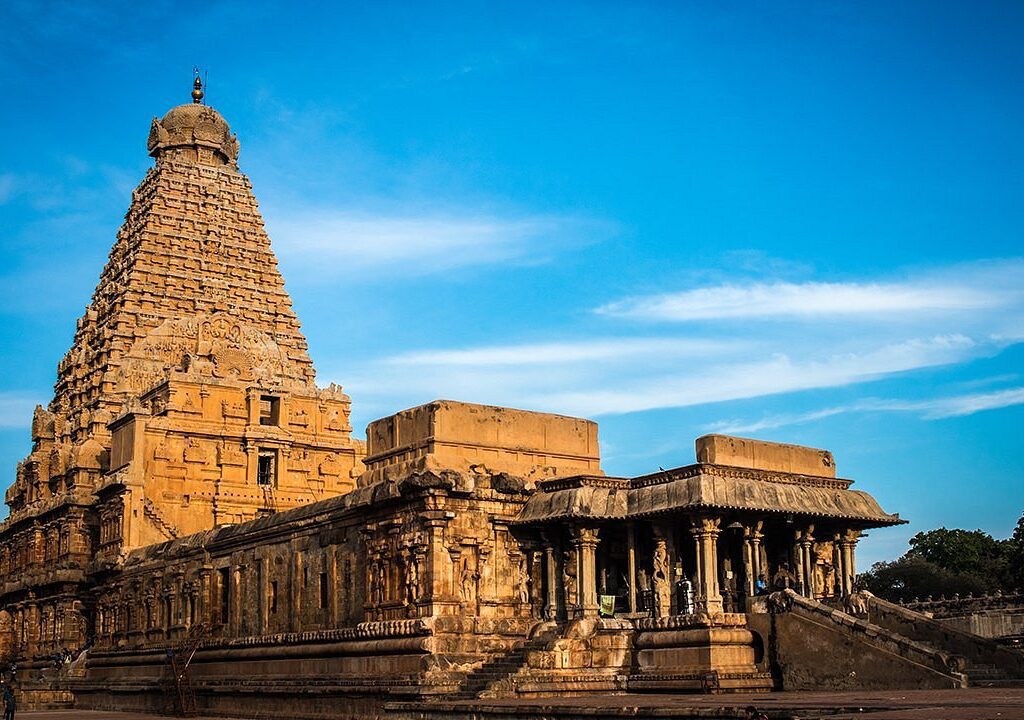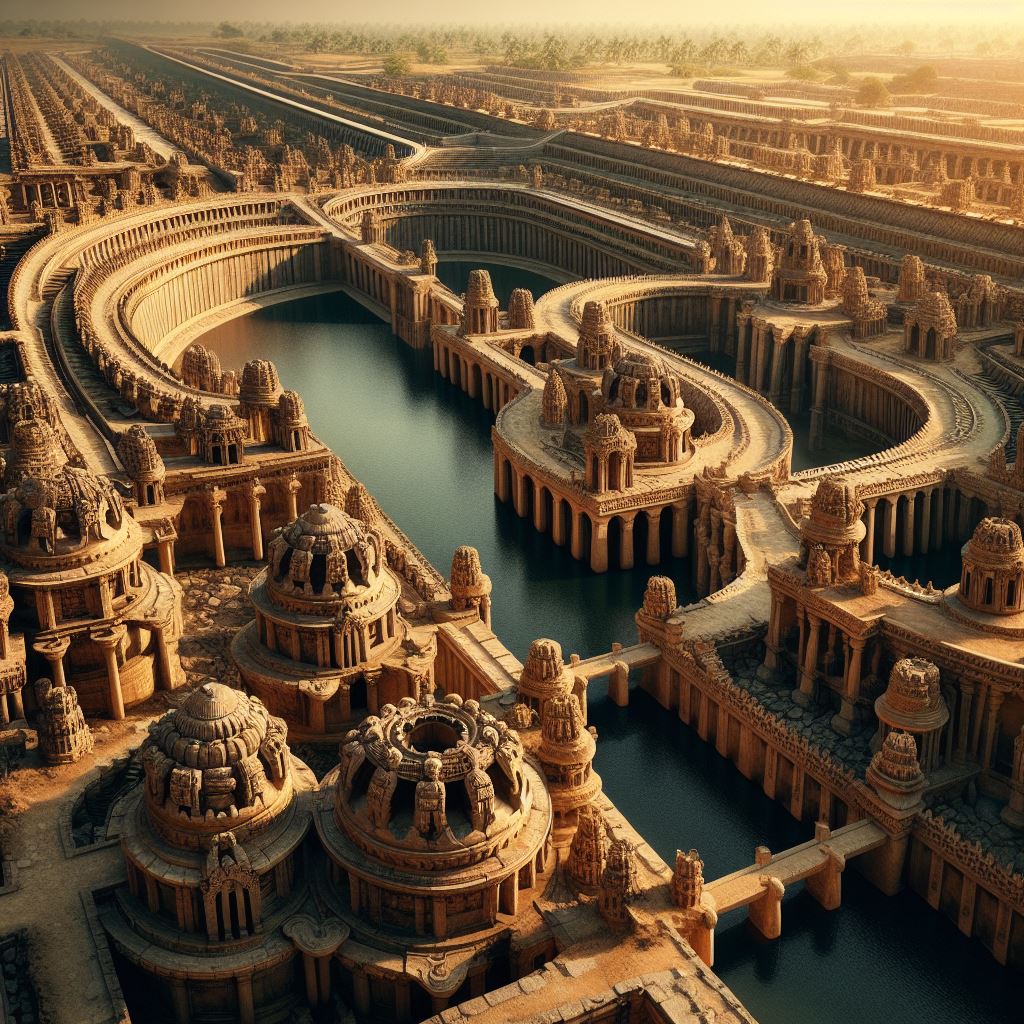Table of Contents
Empowerment and Influence: Role of Women in the Chola Dynasty
The Chola Dynasty, which ruled over the southern region of India from the 9th to the 13th century, is renowned for its rich cultural heritage and architectural marvels. While the dynasty is often associated with the achievements of its powerful kings, the role of women in shaping the Chola Empire cannot be overlooked. In a largely patriarchal society, women in the Chola Dynasty defied societal norms and made significant contributions in various fields. They played key roles in administration, arts, architecture, politics, and religious activities, leaving a lasting impact on the empire’s legacy.

During the Rajaraja and Rajendra Chola periods when the Cholas were at their peak of power, there was an increase in the number of women mentioned in inscriptions. It was, during the stable era of the Chola empire that women enjoyed a high degree of financial independence. However, as times became difficult there are indications that these privileges were gradually taken away. In this blog post, we will delve into the stories of women belonging to the Chola Dynasty exploring their achievements, influence and the lasting impact they had.
The Legacy of the Chola Dynasty
The Chola Dynasty, known for its grandeur and power, left a formidable legacy in the history of South India. Spanning over four centuries, the dynasty witnessed the reign of illustrious kings such as Raja Raja Chola, Rajendra Chola, and Sundara Chola, who expanded the empire’s territory and strengthened its position as a major regional power. The cholas’ era saw remarkable progress in art, architecture, literature, and administration, creating a golden age of culture and intellectual pursuits. The Chola Empire, with its rich cultural heritage and imperial achievements, continues to influence the histories of not only South India but also the entire Indian subcontinent.
Overview of the Chola Empire’s Influence
The influence of the Chola Empire extended far and wide, encompassing vast regions from the Ganges in the north to Ceylon in the south. The empire’s remarkable military campaigns and diplomatic ties with neighbouring kingdoms enhanced its power and position as a dominant force in South India. The Cholas’ imperial policies facilitated trade, contributing to the economic prosperity of the empire. Their reign witnessed the construction of magnificent temples, a testament to the grandeur and architectural prowess of the Chola Dynasty. The cultural and artistic achievements of the Chola period continue to inspire and captivate people to this day.
The Chola Dynasty’s Progression
The Chola Dynasty’s progression saw the rise of powerful kings who played a pivotal role in the empire’s growth and expansion. Raja Raja Chola, the greatest of the Chola kings, embarked on ambitious military campaigns, conquering vast territories and extending the empire’s influence. His son, Rajendra Chola, followed in his footsteps, furthering the empire’s legacy through successful military conquests. Under the reign of Sundara Chola, the empire continued its conquests, solidifying its dominance. The cholas’ inscriptions documented their achievements, creating a historical account of the dynasty’s progress and imperial might.
The Chola era stands as a testament to the dynasty’s military prowess, administrative capabilities, and cultural patronage. Rajendra II and Virarajendra were appointed as Yuvarajas, assisting their older brothers in the administration and succession. Rajendra II even appointed Virarajendra as Yuvaraja after the premature death of his son, who was the crown prince.
Sembiyan Mahadevi – The Guiding Force

A prominent figure in the Chola history, Sembiyan Mahadevi, played a significant role in the dynasty’s cultural and political landscape. As the queen of the mighty Chola dynasty, she wielded power and influence, contributing to the empire’s development. Her exceptional wisdom, foresight, and guidance were instrumental in shaping the empire’s cultural and societal fabric. Sembiyan Mahadevi’s legacy as a guiding force continues to be celebrated, highlighting the achievements and contributions of women in the royal family. Parantaka I, the father-in-law was a ruler, with a mindset and had successfully strengthened the Cholas. However, his eldest son Rajaditya tragically passed away during a battle. As a result, the younger son Gandaraditya became the rightful heir and Sembiyan Mahadevis’s husband.
Contributions to Art and Architecture
Sembiyan Mahadevi’s reign witnessed a flourishing of art and architecture in the Chola period. Her patronage and support for the arts provided the impetus for the construction of magnificent temples and the advancement of various art forms. During her era, the Cholas developed the distinctive Chola style of architecture, characterized by ornate sculptures, intricate carvings, and towering gopurams (temple towers). The architectural marvels, such as the Brihadeeswara Temple in Thanjavur, stand as enduring symbols of the cholas’ artistic contributions and the empire’s grandeur. Sembiyan Mahadevi’s legacy in the realm of art and architecture showcases the dynasty’s patronage of culture and the enduring impact of the Chola period on South Indian heritage.
Social Reforms Introduced
Sembiyan Mahadevi, known for her benevolence and progressive vision, introduced significant social reforms during her reign. She initiated measures to uplift the marginalized sections of society, ensuring their welfare and well-being. The Cholas, under her guidance, implemented policies that aimed to create a more inclusive and equitable society. The inscriptions from the Chola period provide insights into the dynasty’s efforts to abolish outdated customs and promote social harmony. Sembiyan Mahadevi’s influence on social reforms stands as a testament to the Chola dynasty’s commitment to the welfare of its subjects and the dynasty’s progressive ideals.
The Role of Princess Kundavai
Princess Kundavai, a member of the royal family, played a crucial role in the Chola Dynasty’s history and politics. As the daughter of Raja Raja Chola, she was exposed to the intricate workings of the empire from an early age. Her astute political strategies and diplomatic skills contributed to the stability and prosperity of the Chola Dynasty. Kundavai’s influence as a key member of the royal family allowed her to shape the empire’s foreign policies, foster alliances, and ensure the longevity of the Chola Dynasty.

She was married to Vallavarayan Vandiyathevan, who held the title of Bana ruler in Brahmadesam. He was a respected commander, within the Chola army and held significant power. Kundavai’s connection to the Chola army further solidified her position as an influential figure in the empire.
Kundavai as a Political Strategist
Kundavai’s political acumen and strategic thinking made her an invaluable asset to the Chola dynasty. Her understanding of the intricacies of the empire’s politics and international relations allowed her to navigate the complex web of alliances and rivalries. Kundavai played a crucial role in crafting the Chola dynasty’s foreign policies, forging diplomatic ties with neighbouring kingdoms, and ensuring the security and stability of the empire. Her shrewd negotiations and political foresight were instrumental in maintaining the Chola dynasty’s geopolitical influence and the empire’s era of relative peace and prosperity.
Kundavai as an Educator
In addition to her political prowess, Kundavai made significant contributions as an educator during the Chola period. She recognized the importance of education in shaping the empire’s intellectual landscape and fostering the growth of knowledge. Kundavai’s patronage of scholars, poets, and artists contributed to the Cholas’ era of intellectual enlightenment. Her support for the preservation and dissemination of knowledge enriched the Chola empire’s cultural heritage and laid the foundation for the empire’s legacy as a centre of learning.
Women in Administration During the Chola Dynasty

Women in the Chola dynasty were not only active participants but also held prominent positions in the administration. Despite being a largely patriarchal society, the Cholas recognized the capabilities of women in governance and entrusted them with important roles in the empire’s administration. The contributions of women in the Chola era, from policy-making to execution, played a crucial role in the dynasty’s governance and the empire’s accomplishments. I noticed two aspects that grabbed my attention; firstly the Chola empire had women serving as bodyguards and guards for the throne. Secondly, there were individuals from foreign lands who had made their homes in the Chola ports primarily coming for trade and they were referred to by the locals, as Yavanas.
The Position of Women in Chola Society
In the Chola society, women enjoyed a relatively high social status and had opportunities for empowerment. Unlike many contemporary societies, Chola culture celebrated the intellectual and artistic accomplishments of women. Women in Chola society had the freedom to own property, participate in economic activities, and engage in intellectual pursuits. They had the right to choose their spouses and even had the agency to initiate divorces if necessary. The Chola period saw women as active participants in social and religious ceremonies, underscoring the important role they played in the cultural and social fabric of Chola society.
Women as Policy Makers and Executives

The Chola dynasty embraced the participation of women in policy-making and governance, recognizing their abilities and potential. Women held leadership roles and governed territories within the empire, showcasing their administrative capabilities and strategic thinking. Their voices were valued, and they were actively involved in decision-making processes, offering insights and contributing to the empire’s progress. Women’s contributions as policymakers and executives were widely acknowledged and documented in Chola inscriptions, establishing a precedent for inclusive governance in the dynasty.
Women in Religious and Charitable Activities
Women in the Chola dynasty played a significant role in religious and charitable activities, leaving a lasting impact on the dynasty’s cultural and societal fabric. They actively participated in religious rituals, festivals, and ceremonies, upholding the spiritual traditions of the empire. Additionally, Chola women were instrumental in promoting charitable activities, contributing to the welfare of their communities, and supporting the less privileged. The Chola period witnessed the active engagement of women in religious and charitable pursuits, showcasing their dedication and commitment to the betterment of society.
The Tale of Karaikal Ammaiyar

One of the most notable figures in the Chola dynasty’s history, Karaikal Ammaiyar, left an indelible mark on the empire’s religious and cultural landscape. As a devout poet and saint, she composed powerful hymns that reflected her unwavering devotion to Lord Shiva. Karaikal Ammaiyar challenged societal norms by embracing a life of devotion and renunciation, defying the conventions of the time. Her poetry and spiritual journey continue to inspire generations, highlighting the profound spirituality and poetic expressions that emerged during the Chola period. Karaikal Ammaiyar’s legacy has contributed to the preservation of Chola culture and traditions, particularly in the realm of religious activities.
Temples Built by Women of the Chola Dynasty

Women of the Chola dynasty were not only patrons of the arts but also played a significant role in the construction of temples, which became architectural marvels and symbols of the empire’s grandeur. The Chola period witnessed the commissioning and construction of magnificent temples, many of which were spearheaded by Chola women. These temples, with their intricate carvings, towering gopurams, and breathtaking architecture, continue to captivate visitors to this day. Some notable temples built by chola women include:
- Brihadeeswara Temple in Thanjavur: Commissioned by Raja Raja Chola, the temple is a UNESCO World Heritage Site and stands as a testament to Chola architecture.
- Airavatesvara Temple in Darasuram: Built by Raja Raja Chola II, the temple is renowned for its intricate sculptures and architectural brilliance.
- Gangaikonda Cholapuram Temple: Constructed by Rajendra Chola, the temple complex is a stunning example of Chola architecture and the empire’s grandeur.
- These temples, constructed by Chola women, demonstrate their contributions to the Chola empire’s cultural heritage and the enduring impact of their architectural vision.
The Cholas as Hydraulic Engineers – A Woman’s Touch

The Cholas were not only known for their military might and cultural contributions but also for their expertise in hydraulic engineering. The empire’s engineers, both men and women, played a crucial role in the construction and maintenance of reservoirs, canals, and water tanks. The cholas’ understanding of hydrology, irrigation techniques, and water management ensured the efficient distribution of water resources, enabling the empire’s agricultural development. Women, with their technical acumen and practical knowledge, were actively involved in the empire’s engineering projects, adding a unique perspective and contributing to the Cholas’ reputation as hydraulic engineers.
Women’s Involvement in Engineering Projects

Women in the Chola dynasty played a vital role in engineering projects, contributing their expertise and technical skills to ensure the success of such endeavours. Their involvement in the planning, construction, and maintenance of infrastructural projects, such as reservoirs, canals, and tanks, was integral to the empire’s agricultural prosperity. The Cholas recognized the capabilities of women in engineering and harnessed their talents in various projects. Women’s contributions in the field of engineering during the Chola period reflected their technical acumen, practical knowledge, and the dynasty’s commitment to utilizing the skills of all its subjects.
Impact on Society and Culture
The active participation and achievements of women in various facets of Chola society left a profound impact on the empire’s culture and societal norms. Their contributions in administration, arts, architecture, governance, and religious activities enriched the Chola empire’s cultural fabric, fostering an environment of gender inclusivity and empowerment. By challenging traditional roles and breaking societal barriers, Chola women paved the way for the recognition and celebration of women’s abilities and accomplishments. The Chola dynasty’s era, with its achievements and progressive outlook, continues to shape contemporary perspectives on gender roles and empowerment.
The Decline of the Chola Dynasty

As with any empire, the Chola Dynasty also faced its decline, marked by various factors that contributed to the weakening of the empire. Economic and political instability, the rise of other regional powers, invasions from foreign rulers, the loss of important trade routes, and succession disputes among Chola rulers all played a role in the dynasty’s decline. Despite its eventual fall, the Chola Dynasty’s lasting impact on South Indian culture, art, architecture, and governance cannot be understated.
The Role of Women, during the Transition Period
As the Chola dynasty transitioned, women continued to play significant roles in the empire, adapting to the changing circumstances of the post-Chola period. Their involvement, however, may have encountered modifications as the dynasty’s reign ended, and the empire gave way to new powers. The exact nature of the roles and status of women during this transitional phase remains a topic of exploration and speculation, reflecting the dynamic nature of societal structures and the impact of political changes on gender dynamics. Understanding the position and experiences of women in the post-chola period provides valuable insights into the evolving nature of gender roles and the enduring resilience of women throughout history.
Did Women’s Status Change After the Fall of the Chola Dynasty?
The fall of the Chola Dynasty possibly brought about changes in the status of women in the Tamil, Kannada and Kerala regions of Peninsular India. With the empire’s decline, the roles and positions of women likely experienced transformations during the post-Chola period. The exact nature of these changes, however, remains a subject of scholarly study and interpretation. The loss of political power and the shifting dynamics of the region might have influenced the status of women, with new power structures and social norms emerging in the post-Chola era.
Exploring the status of women during this period is crucial for gaining insights into how societal dynamics, cultural values, and power relations reshaped gender roles after the end of Chola’s reign.
Who were some prominent women during the Chola dynasty, and what were their contributions?
Some prominent women during the Chola dynasty included Queen Sembiyan Mahadevi, who was a powerful queen and patron of the arts, and Kundavai, who played a key role in diplomatic affairs. These women contributed to the dynasty’s success through their leadership, support of the arts, and political influence.
Conclusion
The Chola Dynasty witnessed the significant contribution of women in various fields. From art and architecture to administration and engineering, women played a pivotal role in shaping the legacy of the empire. Princess Kundavai emerged as a political strategist and educator, while Sembiyan Mahadevi left her mark on art and social reforms. Women also actively participated in religious and charitable activities, leaving behind a rich cultural heritage. However, with the decline of the Chola Dynasty, the status of women changed. To delve deeper into this topic and explore the post-Chola era, click here
Faqs
What roles did women play in the Chola Dynasty?
Women in the Chola Dynasty were involved in diverse roles, including art, architecture, administration, and religious activities. Princess Kundavai notably emerged as a political strategist and educator, while Sembiyan Mahadevi made significant contributions to art and social reforms.
What was the cultural legacy left behind by women in the Chola Dynasty?
Women in the Chola Dynasty left behind a rich cultural heritage through their active participation in religious and charitable activities, as well as their significant contributions to art, architecture, and social reforms.
Who were some notable women in the Chola Dynasty?
Princess Kundavai and Sembiyan Mahadevi are among the notable women who made a lasting impact in the Chola Dynasty. Princess Kundavai excelled as a political strategist and educator, while Sembiyan Mahadevi left her mark on art and social reforms.
Who was the beautiful woman in the Chola Dynasty?
While historical records may not pinpoint a specific “beautiful woman” in the Chola Dynasty, the period is renowned for its many illustrious queens and princesses. Among them, queens like Sembiyan Mahadevi and other royal women contributed significantly to the dynasty’s cultural and political landscape.




